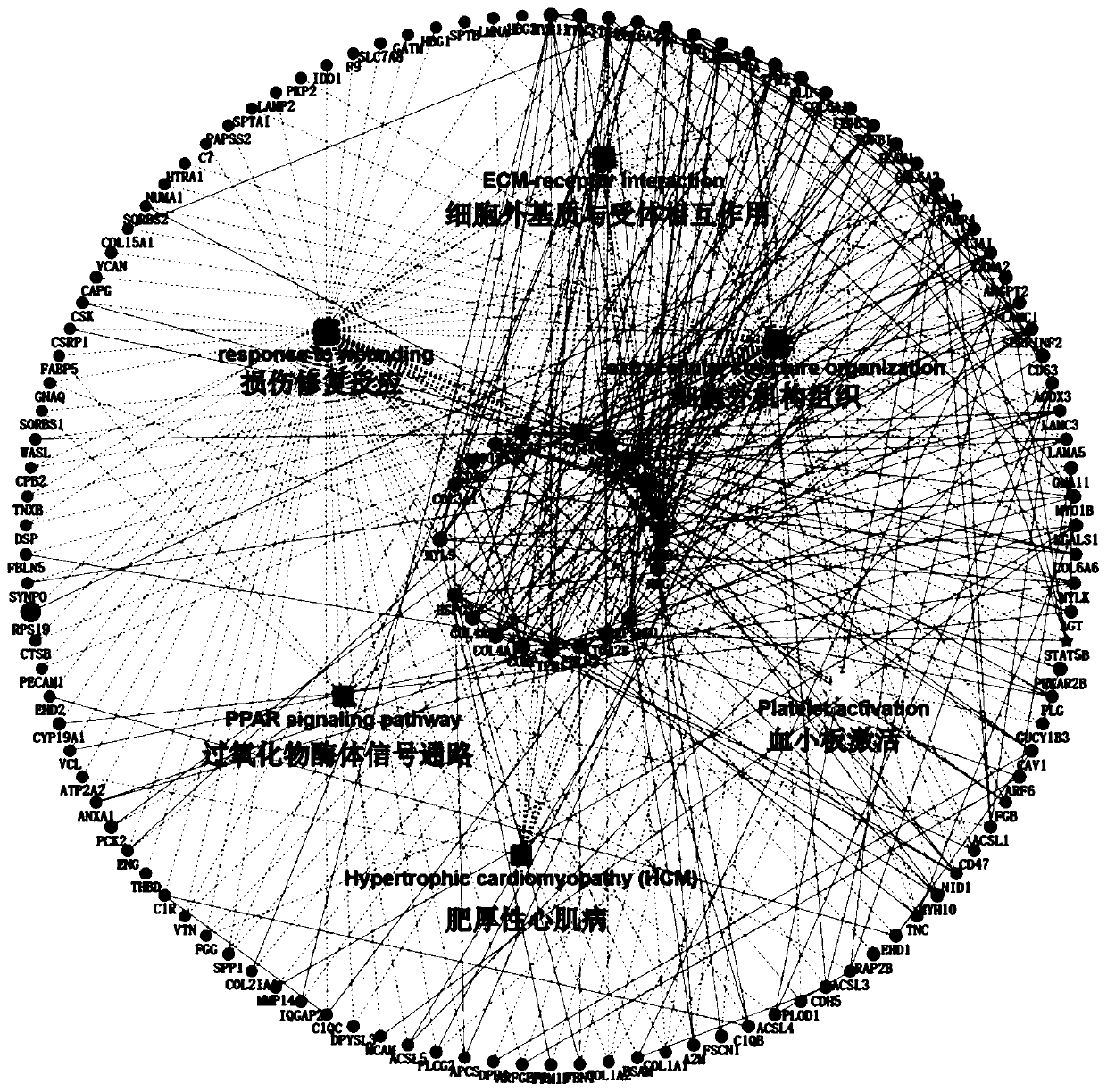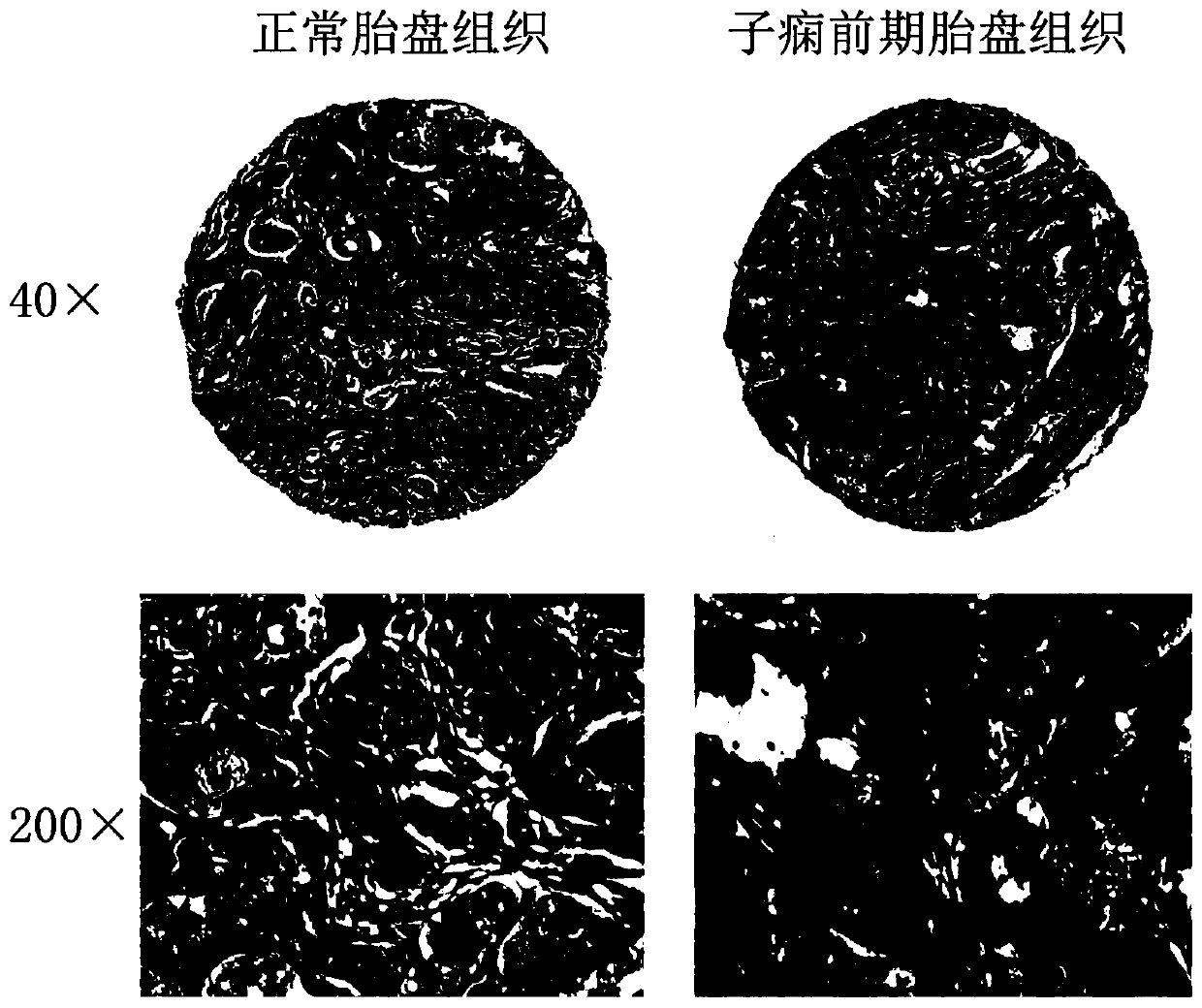Application of labeling reagent of long-chain fatty acid coenzyme A ligase 1 in preeclampsia diagnosis or prediction
A long-chain fatty acid, medium-long-chain fatty acid technology, applied in the field of biomedicine, can solve the problems of false positives or false negatives, instability, and the prediction performance of markers is not obvious, and achieves easy operation, accurate results, and large-scale promotion. The effect of applying value
- Summary
- Abstract
- Description
- Claims
- Application Information
AI Technical Summary
Problems solved by technology
Method used
Image
Examples
Embodiment 1
[0036] Example 1 Long-chain fatty acid coenzyme A ligase 1 as a screening marker for early warning and diagnosis of hypertensive disorders in pregnancy
[0037] Paired samples: 30 cases of placental tissue from preeclampsia; 30 cases of normal placental tissue; during the case collection process, placental tissue samples were collected from approximately the same age and gestational weeks, and metabolic diseases such as diabetes, obesity, and hyperlipidemia were excluded pregnant woman. Clinical trials are human research methods approved by a medical ethics committee. All operations complied with relevant ethical guidelines.
[0038] Weigh 0.3 g of each placental tissue, remove the residual blood with normal saline, place it in liquid nitrogen tissue for quick freezing, place it in a mortar filled with liquid nitrogen, and grind it into powder. Add 400 μL of protein lysate, perform ultrasonic lysis under ice bath conditions, power 300W, work for 1s, rest for 5s, 50 cycles. ...
Embodiment 2
[0040] Example 2 The level difference of ACSL1 in the placenta tissue of patients with preeclampsia and the placenta tissue of normal women
[0041] Paired samples: 30 cases of placental tissue from preeclamptic women; 30 cases of normal maternal placental tissue;
[0042] All patients were volunteers who gave informed consent.
[0043] Each sample was taken separately for immunohistochemical detection. The primary antibody used was rabbit anti-ACSL1 antibody from Abcam Company, Cat. No. Ab76702. The immunohistochemistry kit used SP Rabbit & MouseHRP Kit Rabbit / Mouse Universal Streptavidin-HRP kit from Kangwei Century Biotechnology Co., Ltd., catalog number CW0120A. DAB color reaction was used. The results of the placental tissue of a patient with preeclampsia and the placental tissue of a normal woman are shown in figure 2 (100x magnification). Image-Pro Plus 6.0 software was used to scan and analyze the optical density value of the placental tissues of preeclampsia and...
Embodiment 3
[0045] Example 3 Differences in the level of ACSL1 in the serum of different populations
[0046] Two populations: 30 cases of preeclampsia; 30 cases of normal parturients; all volunteers with informed consent.
[0047] The serum of 30 normal pregnant women and 30 pregnant women with preeclampsia were collected, and 200 μL was taken for each case. After centrifugation at 3500 rpm for 10 min at 4°C, the supernatant was taken for testing. The Abbexa company ACSL1 ELISA kit, catalog number abx110794, was used.
[0048] Perform follow-up operations according to the instructions of the kit: add 100 μL serum supernatant to the 96-well plate, add 100 μL reagent 1 to the blank well, and add 100 μL ACSL1 standard solution with a concentration of 20 μM to the standard well. Add 100 μL of reagent two and 25 μL of reagent three to all wells. After mixing, let stand for 5min.
[0049] Use a microplate reader to detect the absorbance value of each well at a wavelength of 405 nm, and cal...
PUM
 Login to View More
Login to View More Abstract
Description
Claims
Application Information
 Login to View More
Login to View More - R&D Engineer
- R&D Manager
- IP Professional
- Industry Leading Data Capabilities
- Powerful AI technology
- Patent DNA Extraction
Browse by: Latest US Patents, China's latest patents, Technical Efficacy Thesaurus, Application Domain, Technology Topic, Popular Technical Reports.
© 2024 PatSnap. All rights reserved.Legal|Privacy policy|Modern Slavery Act Transparency Statement|Sitemap|About US| Contact US: help@patsnap.com










